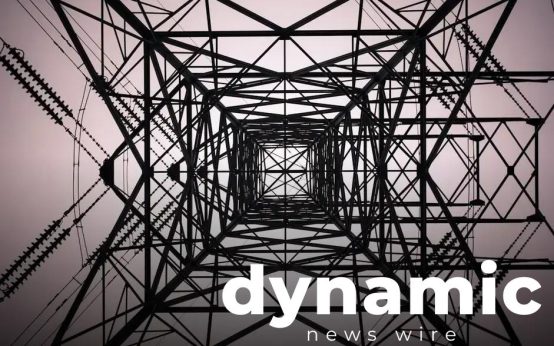As businesses increasingly turn to digital solutions, the impact of IT infrastructure on the environment cannot be ignored. Opting for green cloud computing can significantly reduce emissions, providing a more sustainable approach to managing digital resources. This article explores the myriad ways in which green technology impacts the environment positively, delving into strategies and case studies that showcase its effectiveness. Let’s dive into how businesses can transition to eco-friendly cloud solutions and the latest trends in this evolving field.
Understanding Green Cloud Computing
At the core of Green Cloud Computing is the shift towards energy-efficient technologies that prioritize sustainability. This involves using data centers that optimize for power usage effectiveness and operate on renewable energy sources. By doing this, companies can drastically reduce their carbon footprint and lower operational costs.
Green cloud computing utilizes innovative strategies such as server virtualization, which maximizes resource use and minimizes wastage. Cloud providers are adopting cooling techniques that use less energy, such as liquid cooling and smart ventilation systems, significantly reducing energy consumption. Furthermore, the implementation of AI-driven algorithms helps in predictive maintenance, reducing unnecessary energy use and ensuring optimal performance.
Key Considerations
- Resource Optimization: Efficient allocation and use of computing resources minimize unnecessary energy expenditure.
- Renewable Integration: Using wind, solar, or other renewable energies to power data centers.
- Virtualization: Decreasing the physical hardware requirements through virtualization reduces energy needs.
Furthermore, green cloud initiatives focus on reducing e-waste by promoting the reuse and recycling of IT equipment, which complements the broader goal of minimizing environmental impact. As organizations continue to embrace these technologies, the impact on emissions reduction becomes increasingly significant.
Environmental Benefits of Green Cloud Solutions

Green cloud solutions play a pivotal role in reducing the environmental footprint of data centers. By leveraging renewable energy resources, these solutions effectively cut down on carbon emissions. Data centers traditionally consume massive amounts of energy, primarily from fossil fuels. By using green cloud computing, there’s a significant reduction in dependency on non-renewable energy.
Efficient Resource Allocation is another major benefit of green cloud solutions. Through virtualization and optimized resource management, servers run at higher efficiency. This means fewer resources are wasted, leading to a decrease in overall energy consumption.
Additionally, green cloud solutions incorporate advanced cooling techniques that minimize energy use. Traditional cooling systems in data centers consume substantial energy. Green cloud innovations use techniques like ambient air cooling, which significantly lowers the power usage effectiveness (PUE) ratio. As a result, the need for electricity is reduced, leading to a smaller carbon footprint.
Moreover, green cloud solutions support sustainable software practices. Developers are encouraged to optimize code and design applications that consume less power. Green coding principles and energy-efficient algorithms become the norm, ensuring that all computational processes are as eco-friendly as possible.
Lastly, the adoption of energy-efficient hardware is crucial. Modern green cloud data centers utilize low-power processors and solid-state drives, which are more energy-efficient compared to traditional hardware. This shift towards sustainable infrastructure further decreases overall emissions associated with cloud computing.
Innovative Strategies in Sustainable Cloud Computing
Green cloud computing is gaining traction as organizations look for innovative strategies to decrease their environmental impact. Companies are adopting sustainable practices that leverage the flexibility and efficiency of the cloud. Using renewable energy sources is a fundamental strategy in sustainable cloud computing. Many data centers are now powered by solar, wind, or hydroelectric energy, significantly reducing carbon footprints.
Another approach involves improving operational efficiency by optimizing resource use. This includes leveraging virtualization to maximize server usage and deploying advanced cooling techniques to lower energy consumption. These methods not only help in reducing emissions but also cut down operational costs for businesses.
Moreover, cloud providers are designing software that supports multi-tenancy, allowing multiple organizations to share the same infrastructure, thus maximizing utilization and minimizing environmental impact.
Furthermore, innovative data management techniques like data deduplication are critical. They help reduce the amount of data stored, which in turn lowers the demand for storage resources and energy requirements. Alongside these strategies, edge computing can reduce latency and reduce the need for extensive infrastructure.
As the world becomes more eco-conscious, these sustainable practices are leading the way in reducing emissions. By integrating these strategies, businesses not only contribute to a greener planet but also achieve operational efficiency.
Case Studies: Success Stories in Reducing Emissions

In the quest for a sustainable future, organizations are increasingly turning to green cloud computing. Several companies have set exemplary standards in reducing emissions through innovative cloud solutions.
For instance, Company A transitioned to a cloud infrastructure that optimizes energy consumption. By analyzing server load and dynamically adjusting resources, this company achieved a significant reduction in carbon emissions. Furthermore, they incorporated renewable energy sources, such as solar panels, to power their data centers.
Another notable example is Company B, which deployed cutting-edge energy-efficient technologies to track and minimize their carbon footprint. Their approach included using AI algorithms to predict demand and adjust server usage accordingly, striking a balance between performance and sustainability.
Moreover, Company C collaborated with green data centers that prioritize sustainable practices, including water conservation and waste management initiatives. This effort not only reduced emissions but also optimized operational costs over time.
These case studies demonstrate the potential of green cloud computing to make substantial progress in emission reduction. These examples highlight successful strategies such as leveraging AI for energy management, adopting renewable energy, and collaborating with eco-friendly partners.
Future Trends in Green Cloud Technology
As organizations aim to become more eco-friendly, green cloud technology is evolving rapidly. A significant trend is the increased use of renewable energy sources to power data centers. Many cloud providers are investing in wind and solar energy to decrease their reliance on fossil fuels.
Another development is the advancement in energy-efficient hardware. Modern servers and storage systems are being designed to consume less power, improving the overall energy efficiency of cloud operations. This hardware is often paired with smart cooling technologies, further minimizing energy use.
Emerging software solutions play a crucial role as well. Energy management platforms are becoming more intelligent, capable of dynamically adjusting resources according to the workload. This optimizes energy use and can significantly reduce emissions.
The integration of AI and machine learning is another key trend. These technologies help predict energy demands and optimize resource allocation in real-time, making data processing more sustainable.
Regulatory policies and industry standards are also pushing the adoption of greener cloud solutions. Governments worldwide are implementing regulations to ensure data centers operate in an environmentally responsible manner, encouraging innovation and compliance.
Lastly, there’s a shift towards circular economy principles. Providers are focusing on the eco-design of infrastructure and the recycling of older equipment to reduce landfill waste.





